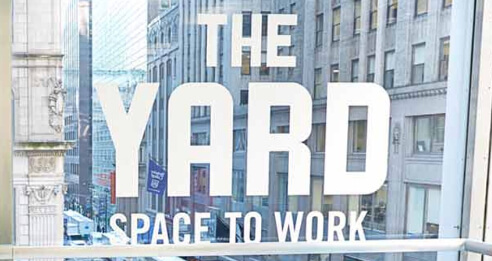
Largest Coworking Companies


With the rapid growth of coworking spaces, people have begun to wonder if the market has reached its peak demand, and whether it has become too saturated. While experts believe that “coworking’s growth in the U.S. and Europe will slow over the next five years,” it has become apparent that there is still plenty of room for the coworking market to grow and continue to be profitable. Here is a coworking space industry analysis of what the future might hold for the industry.
In 2019, the number of global coworking spaces available was at 18,900. That number is expected to reach over 30,000 in 2022, which means the market will grow by an impressive 16.1% per year for the next couple of years. The market may seem saturated, but the number of global members is expected to grow even faster, jumping up to 5.1 million in 2022 from just 1.74 million in 2017. The coworking market size, even though it is growing quickly, is still struggling to keep up with the demand.
The needs of coworkers are beginning to change and shift away from what it was in years past. Jonathan Puleio from Humanscale believes that large companies are the cause of this change. “There’s a shift to larger companies, they are now engaging with flexible workspaces and they have a different set of needs than smaller companies. They also have higher expectations.”
WeWork is one example of a company that has been growing to meet that demand and has even launched a brokerage service this year address it. The company stated that it will offer workspace to both small and mid-sized companies, regardless of their requirements.
Another way demand is shifting is in the popularity of private offices. More than 75% of all coworking spaces have members renting private offices. Interestingly, the desks are not used by just one member, but instead interchangeably between multiple members.
A survey of coworking spaces has found that the bigger the coworking space, the more likely space is going to be used by private offices. For coworking businesses, the private offices do generate more income than a desk workspace, which has dropped in price recently. Because more space is taken up by private offices, that means there needs to be a growth of coworking spaces to meet the demand of coworkers, which may be the reason for thenotion that the coworking market is saturated.
Launching back in 2010, WeWork quickly became one of the most valuable and popular startups in America. It used outside investments to stay profitable in New York, despite expensive real estate costs. While WeWork posted a profit of $1.8 billion in 2018, it also had losses of $1.93 billion. It can be argued that this lack of profit is normal and healthy during a period of growth, however the business is facing much skepticism from financial experts who say that the shift to a more sustainable business model is impossible with WeWork's current growth strategy and unreasonable valuation (currently $47 billion).
Update: WeWork's failed IPO in September and the resulting breakdown of it's astronomical valuation have led to massive layoffs and general uncertainty of the company's future. This has prompted some concern over the impact that WeWork's potential demise may have on the industry and how coworking fits into the larger real estate market. We at CoworkingResources believe that the recent controversies at WeWork and all of it's associated companies only serves to highlight the smaller independent brands that make up the bulk of the industry. While WeWork does have a large impact on major cities, we have seen more demand in recent years for niche coworking spaces that are more community-focused rather than larger chains. See our recent 2019 Global Coworking Growth Study for more insights! Stay tuned for more updates on the coworking landscape.
Another New York-based company, Industrious, has acquired TechSpace, a coworking business. Industrious, which works with landlords to manage office space in revenue sharing agreements, is expanding rapidly. This acquisition seems to indicate that fewer people are looking for traditional commercial office space. This acquisition fits the shift in demand that coworking spaces are seeing across the country, as more companies aren’t abandon traditional commercial spaces.
These major acquisitions of fast-growing spaces are reminiscent of the aggressive takeovers commonly seen in the tech startup scene. Coworking spaces are shifting and expanding their business models faster than the industry as a whole can keep up with. However these acquisitions mean that these companies are doing something right and are attracting enough attention (and members) to be valuable to the major players. Overall this falls in line with the positive trajectory of the industry.
A survey in 2019 that found that “in the U.S., 18% of coworking operators say there are too many coworking spaces; 69% say the amount is just right, and 13% say there are too few coworking spaces.” These findings and more show that the growth of coworking spaces is likely to continue over the next couple of years, as more businesses are formed to meet the growing demands of remote workers.
Save your community manager 41 hours each week—learn how The Yard did it with cloud-based access control.
Read the Case StudyThe Guide to Make Your Space More Profitable
Including interviews with experts and consultants.
Free access to our best guides, industry insights and more.
